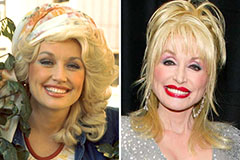Red Wigglers: The Unsung Heroes of Organic Waste Recycling
Red wigglers, or Eisenia fetida, serve as essential agents in the organic waste reusing procedure, transforming thrown out materials right into valuable vermicompost. As the world increasingly seeks options to deal with waste buildup and boost agricultural performance, recognizing the function of these worms comes to be essential.
What Are Red Wigglers?
The impressive durability of red wigglers, scientifically referred to as Eisenia fetida, highlights their essential duty in organic waste recycling. These tiny, reddish-brown earthworms are normally located in disintegrating organic issue, such as compost heap and manure stacks. Lake Hickory Bait. Unlike various other earthworm species, red wigglers grow in nutrient-rich atmospheres and are very efficient at damaging down organic materials, making them essential for vermicomposting

(Red Wiggler Express)Along with their role in waste reduction, red wigglers add to dirt health by enhancing dirt framework and oygenation through their tunneling activities (Lake Hickory Bait). Their visibility in composting systems not just enhances decay prices yet additionally promotes a sustainable method to lose monitoring, illustrating their significance in environmental preservation initiatives
Advantages of Composting With Worms
Composting with worms, particularly red wigglers, provides countless benefits that enhance both waste administration and soil health and wellness. Initially, these worms successfully damage down natural waste, transforming it right into nutrient-rich vermicompost that improves dirt. This procedure speeds up disintegration, permitting a faster recycling of kitchen area scraps and other natural materials compared to standard composting approaches.
Additionally, the vermicompost produced by red wigglers is brimming with helpful bacteria, which assist improve soil framework, oygenation, and wetness retention. This improves the total health of plants, promoting vigorous growth and raised returns in gardens and agricultural setups. In addition, the usage of worms in composting reduces the production of greenhouse gases, such as methane, adding to a much more sustainable waste monitoring system.

Just How to Start Vermicomposting
Establishing a vermicomposting system is a simple process that can generate significant benefits for both waste management and dirt enrichment. To begin, pick an ideal container, such as a plastic container or wooden box, with sufficient ventilation openings to make certain appropriate air movement. The measurements should ideally be around 2 feet by 3 feet, allowing sufficient area for the worms to flourish.
Next, prepare bed linens product, which can consist of shredded paper, cardboard, or coconut coir. This bed linens ought to be dampened to produce an appropriate habitat for the worms. When the bed linens remains in area, present red wigglers (Eisenia fetida) into the bin, typically around one extra pound of worms for each square foot of surface.
Following the positioning of worms, add organic waste, such as fruit and vegetable scraps, coffee premises, and smashed eggshells. Avoid adding dairy products, meat, or oils, as these can develop odors and attract parasites. Lastly, position the bin in a shaded, temperature-controlled area to preserve optimal problems for worm task. With these steps, you will efficiently initiate a vermicomposting system that adds to sustainable waste management and enhances your dirt.
Preserving a Healthy Worm Bin
(Red Wiggler Express)Maintaining a worm bin flourishing requires routine focus and see page like ensure the health of the red wigglers and the efficiency of the composting process. Appropriate upkeep begins with keeping an eye on the moisture degrees; the bin ought to perspire but not saturated. A great general rule is to maintain an uniformity comparable to a wrung-out sponge.
Carefully mixing the bed linen and food scraps every few weeks avoids compaction and makes sure that all worms have access to oxygen. Additionally, it is vital to feed the worms properly.
Temperature level guideline is one more vital facet. Red wigglers grow in a variety of 55 to 77 levels Fahrenheit. If the container ends up being too hot or cool, the worms may come to be stressed out - Lake Hickory Bait. Periodically check for indications of health, such as worm population development and the existence of healthy castings. By diligently taking care of these elements, one can preserve a robust and effective worm container.
Effect On Lasting Living
The effective upkeep of a worm container not only benefits the health of red wigglers but also adds dramatically to lasting living practices. By recycling organic waste, such as cooking area scraps and lawn particles, red wigglers aid draw away substantial amounts of material from landfills. This decrease in waste not just reduces greenhouse gas exhausts however also lessens the ecological worry related to waste administration.
Furthermore, the spreadings generated by red wigglers act as a nutrient-rich natural fertilizer, improving dirt wellness and advertising plant growth. This all-natural choice to chemical plant foods supports lasting farming and gardening methods, minimizing reliance on synthetic inputs that can damage communities. In addition, worm composting promotes recognition of waste administration, urging individuals and communities to take on more sustainable habits.

Final Thought
In summary, red wigglers work as important factors to organic waste reusing with their efficient decay of organic materials. Their ability to produce nutrient-rich vermicompost boosts soil health and wellness and sustains lasting agricultural techniques. By integrating vermicomposting right into waste monitoring approaches, individuals and neighborhoods can substantially lower waste while advertising ecological sustainability. The function of Eisenia fetida in promoting healthy and balanced ecosystems emphasizes the value of these organisms in achieving sustainable living and enhancing soil fertility.
 Marla Sokoloff Then & Now!
Marla Sokoloff Then & Now! Julia Stiles Then & Now!
Julia Stiles Then & Now! Dawn Wells Then & Now!
Dawn Wells Then & Now! Dolly Parton Then & Now!
Dolly Parton Then & Now! The Olsen Twins Then & Now!
The Olsen Twins Then & Now!